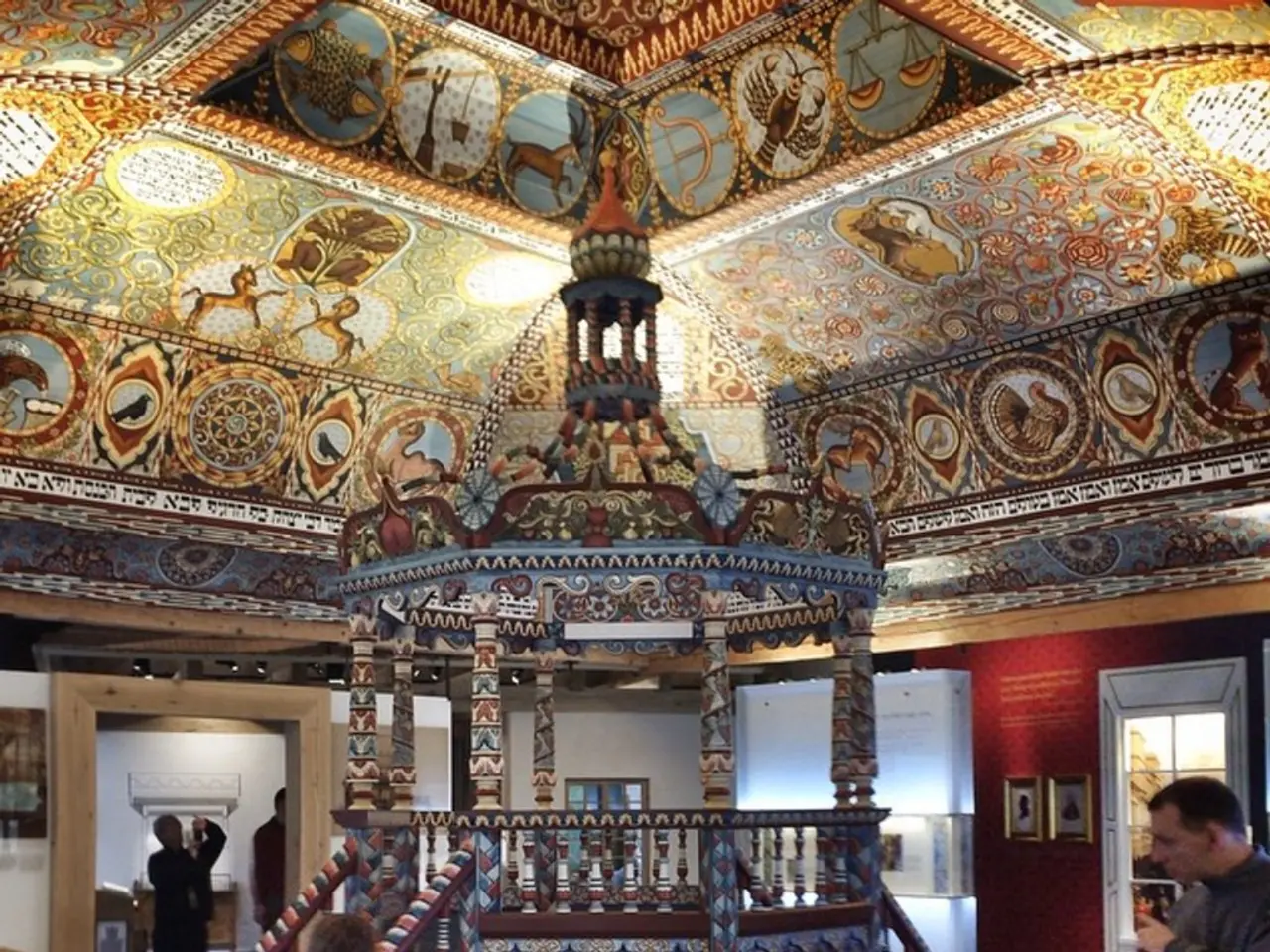Educational establishments in India and Dubai fostering knowledge acquisition via design and architecture
In the heart of India, a revolution is underway in the realm of education. Several renowned schools and institutions are redefining learning experiences by embracing innovative design and architecture. These educational hubs are not just places for scholarly pursuits, but spaces that foster creativity, exploration, and a deep connection with nature.
One such example is the Ansal School in Panipat, designed by Karan Osahan Architects. The school's modern and Bauhaus-inspired architecture incorporates ecological features such as solar panels, rainwater harvesting, and natural ventilation, creating an environment that promotes experiential learning. The school's design emphasizes natural light and cross ventilation, offering optimal learning conditions [1].
In Warangal, Telangana, Sparkrill International School, designed by SJK Architects, challenges conventional classroom norms. Its campus, which includes academic blocks and diverse facilities, fosters informal and exploratory learning through its integration with nature. This school is a testament to the power of architecture in shaping a learning environment that encourages creativity and exploration in a sociocultural context that traditionally favors rote learning [1].
The World University of Design in Sonipat is a hub for immersive learning experiences in architecture and design. It hosts international masterclasses, exposing students to global design practices while encouraging cultural expression and innovative architectural thinking in everyday contexts [2].
In Mumbai, Sir J. J College of Architecture, one of India’s oldest and most prestigious architecture colleges, offers robust academic programs integrating design and architecture excellence. Recognized for its academic rigor and historic legacy, it continues to shape the future of architectural education [3].
IIT Roorkee's Department of Architecture emphasizes design innovation, technology, and sustainability in its curriculum, offering degrees in architecture as well as urban and rural planning [3][5]. MIT Art, Design & Technology University in Pune, positions itself as a new-generation university focusing on innovation. It offers comprehensive programs in architecture, design, and technology, promoting interdisciplinary development through its CRIEYA initiative [4].
In the spirit of redefining education, innovative learning spaces are popping up across India. The Library Pod in Aurangabad, initiated by Rajshri Deshpande of Nabhangan Foundation, is a metal unit doubling as a water-tight bookshelf and blackboards, built under a peepal tree. Toy Blocks, a kindergarten in Ahmedabad, designed by Principal Architect Hartmut Wurster and his team at Blocher Partners India, is a cluster of nine cube-shaped buildings, inspired by the principles of Reggio Emilia and carved with locally sourced materials [1].
The Woxsen Library in Hyderabad, part of the Woxsen university, is a steel and concrete structure spread across 70,000 sq ft, designed to reduce the use of artificial lighting and encourage students to open their minds with features like coffee shops, new age technology, and reading nooks. Lala Kamalapat Singhania Public School in Nimbahera, Rajasthan, extended by R+D Studio from a 1960s school built by JK Cement, is another example of innovative school design [1].
Biswa Bangla Bishwavidyalaya (BBB) in West Bengal, designed by CP Kukreja Architects, is a liberal arts university inspired by the principles of Gurukul, an ancient Indian system of learning. Its unique architecture features an auditorium symbolising the conch shell, a library reminiscent of old town clock towers, and architectural elements like the do-chala roof and terracotta jali [1].
The South View School in Dubai, designed by R + D Studio, houses kindergarten and older children, blending contemporary and traditional architecture. Bloomingdales International School in Vijayawada, Andhra Pradesh, designed by andblack Design Studio, extends the original building, covering 4,000 sq ft, with an irregular structure for the pre-primary school [1].
Dr B.R. Ambedkar School of Economics in Bengaluru, designed by Education Design International, features a deep integration with nature [1]. Each of these institutions exemplifies a combination of thoughtful architecture, ecological sustainability, and learning environments aimed at redefining how design is integrated into education in India [1][2][3][4][5].
These pioneering schools and institutions are paving the way for a new era in education, demonstrating that architecture can play a significant role in shaping learning environments that foster creativity, exploration, and a deep connection with nature.
[1] - India Architecture and Design [2] - World University of Design [3] - IIT Roorkee [4] - MIT ADT University [5] - Times of India
- Technology integration is evident in the learning environments of several innovative schools in India, such as the World University of Design in Sonipat, which hosts international masterclasses exposing students to global design practices.
- The Ansal School in Panipat, designed by Karan Osahan Architects, not only focuses on education and self-development but also embraces technology in its sustainable features like solar panels and natural ventilation, creating an environment that promotes experiential learning.




